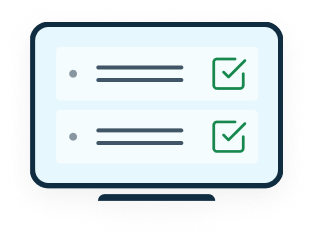Our training options
Popular
Videos
Online, on demand
and at your own pace
- Instant Access 24/7
- Unlimited viewing for 1 year
(▶ See a demo of the training interface) - Flexible: follow every course at your own rythm and schedule
- Training manual and exercice files provided
- Official Attestation given after course completion
Private
Remotely or at your office,
to suit your schedule
made-to-measure :
price per team

Chloé Bessette
Training Manager
- In online classes or at your office
- For a group/team from your company/organization
- Standard or custom-made syllabus
- Live, private Teacher
- Training manual and exercice files provided
- Official Attestation given after course completion
Power BI Fundamentals Course
999.99$ /pers.
Demander une formation privée
Contact
We'll get back to you within one business day.
Prerequisites
- Access to a Microsoft 365 subscription with Power BI
Overview of the tools and their capabilities
- Terms and concepts of decision support tools
- Define the objectives of the analysis.
- Clarify key concepts: cube, relationships, dimensions, indicators, measurement, hierarchy
- Model information and build a robust and dynamic relational schema.
Data import and update process
- Load different data sources (Excel, flat files, databases, unstructured data: web pages, Facebook, Exchange messaging, etc.)
- Transform data in the query editor (PowerQuery) using the M language
- Refresh reports after source data is updated
- Import an Excel workbook
Modeling and adding new DAX metrics
Use the Modeling menu to
- Create relationships (cardinality options: 1-to-1, 1-to-many, many-to-1)
- add columns or fields calculated in DAX
- Sort a column by another column
Mastering the main DAX function families
- Iterative functions
- Filtering
- Time Intelligence
Analyze some common use cases
- Sales analytics
- Satisfaction survey
Visualize and share dashboards
- Create and set up visualizations from data (graphs, tables, KPI, segments)
- Add filters at the visualization, page, or report level
- Edit interactions of the visual elements
- Create a hierarchy
Operating the Power BI site
- Publish reports to a Power BI site
- Pin visualizations to a dashboard
- Create a simple security role
- Query dashboards in natural language with Q&A
Base
- Access to a Microsoft 365 subscription with Power BI
- Describe the cycle of creating a Power BI report
- Establish connections to data sources
- Transform, clean, and combine sources
- Structuring a data model
- Create your first DAX measurements and indicators
- View metrics in PBI reports
- Share reports
Overview of the tools and their capabilities
- Terms and concepts of decision support tools
- Define the objectives of the analysis.
- Clarify key concepts: cube, relationships, dimensions, indicators, measurement, hierarchy
- Model information and build a robust and dynamic relational schema.
Data import and update process
- Load different data sources (Excel, flat files, databases, unstructured data: web pages, Facebook, Exchange messaging, etc.)
- Transform data in the query editor (PowerQuery) using the M language
- Refresh reports after source data is updated
- Import an Excel workbook
Modeling and adding new DAX metrics
Use the Modeling menu to
- Create relationships (cardinality options: 1-to-1, 1-to-many, many-to-1)
- add columns or fields calculated in DAX
- Sort a column by another column
Mastering the main DAX function families
- Iterative functions
- Filtering
- Time Intelligence
Analyze some common use cases
- Sales analytics
- Satisfaction survey
Visualize and share dashboards
- Create and set up visualizations from data (graphs, tables, KPI, segments)
- Add filters at the visualization, page, or report level
- Edit interactions of the visual elements
- Create a hierarchy
Operating the Power BI site
- Publish reports to a Power BI site
- Pin visualizations to a dashboard
- Create a simple security role
- Query dashboards in natural language with Q&A
Need to assess your level?
Select the right course for you using the Formation CAD Auto-Assessment tool

